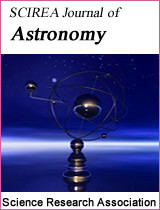Implications of detecting the Axion-Like Particles in Astro-Particle Physics
DOI: 346 Downloads 121074 Views
Author(s)
Abstract
Axions and axion like particles in general are consequences of the extensions of the standard model in particle physics. Axions have been proposed as hypothetical pseudo-scalar particles in particle physics to solve the strong Charge-Parity problem using quantum chromodynamics. These particles are also proposed to be an attractive candidate for cold dark matter in the Universe. The current understanding of the existence and properties of the axions is not very clear and these hypothetical particles remain elusive. However many theoretical and experimental searches are being made for understanding and constraining the properties of axions via detection of axion like particles. The term axion like particles is used to include different types of axions going beyond the standard model. In this paper, we review the different physical properties of axions and axion like particles and their possible sources in the laboratory and Universe. We discuss different experimental set ups for detection of axion like particles proposed in the literature. Implications of detecting the axion like particles in the areas of particle physics, astrophysics and cosmology are also discussed in the framework of present and future motivations.
Keywords
Axions- elementary particles: ALPs- astroparticle physics: detections
Cite this paper
K K Singh,
Implications of detecting the Axion-Like Particles in Astro-Particle Physics
, SCIREA Journal of Astronomy.
Volume 3, Issue 1, February 2019 | PP. 1-12.
References
| [ 1 ] | R. Peccei, H. R. Quinn, 1977, Phys. Rev. Lett., 38, 1440 |
| [ 2 ] | F. Wilczek, 1978, Phys. Rev. Lett., 40, 279 |
| [ 3 ] | J. E. Kim, G. Carosi, 2010, Rev. Mod. Phys., 82, 557 |
| [ 4 ] | R. Daido et al., 2016, Phys. Rev. D, 93, 075027 |
| [ 5 ] | L. Wolfenstein, 1978, Phys. Rev. D, 17, 2369 |
| [ 6 ] | P. Sikivie, 2008, Lect. Notes Phys., 741, 19 |
| [ 7 ] | D. J. E. Marsh, 2016, Phys. Rep., 643, 1 |
| [ 8 ] | A. De Angelis et al., 2007, Phys. Rev. D, 76, 121301 |
| [ 9 ] | A. De Angelis et al., 2011, Phys. Rev. D, 84, 105030 |
| [ 10 ] | H. Primakoff, 1951, Phys. Rev., 81, 899 |
| [ 11 ] | M. Zioutas et al., 2005, Phys. Rev. Lett., 94, 121301 |
| [ 12 ] | E. Braaten et al., 2016, Phys. Rev. Lett., 117, 121801 |
| [ 13 ] | L. Hui et al., 2017, Phys. Rev. D, 95, 043541 |
| [ 14 ] | P. Sikivie, 1983, Phys. Rev. Lett., 51, 1415 |
| [ 15 ] | D. Clowe et al., 2006, ApJL, 648, 109 |
| [ 16 ] | P. Sikivie, 1985, Phys. Rev. D, 32, 2988 |
| [ 17 ] | Y. Inoue et al., 2008, Phys. Lett. B, 668, 93 |
| [ 18 ] | E. A. Paschos, K. Zioutas, 1994, Phys. Lett. B, 323, 367 |
| [ 19 ] | K. van Bibber et al., 1983, Phys. Rev. Lett., 59, 759 |
| [ 20 ] | H. Tam, Q. Yang, 2012, Phys. Lett. B, 716, 435 |
| [ 21 ] | Y. Semertzidis et al., 1990, Phys.Rev. Lett., 64, 2988 |
| [ 22 ] | E. Zavattini et al., 2006, Phys. Rev. Lett., 96, 110406 |
| [ 23 ] | A. Mirizzi et al., 2007, Phys. Rev. D, 76, 023001 |
| [ 24 ] | K. K. Singh et al., 2016, DAE-BRNS Symp. Nucl. Phys., 61, 906 |
| [ 25 ] | M. S. Turner, 1988, Phys. Rev. Lett., 60, 1797 |
| [ 26 ] | A. Abramowski et al., 2013, Phys. Rev. D, 88, 102003 |
| [ 27 ] | M. Giannotti et al., 2017, JCAP, 10, 010 |
| [ 28 ] | M. Alcubierre et al., 2003, Class. Quant. Grav., 20, 2883 |
| [ 29 ] | F. Wilczek, 1982, Phys. Rev. Lett., 49, 1549 |
| [ 30 ] | S. F. King, C. Luhn, 2013, Rep. Prog. Phys. 76, 056201 |

